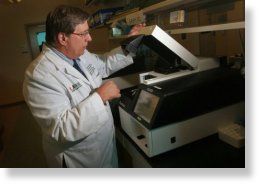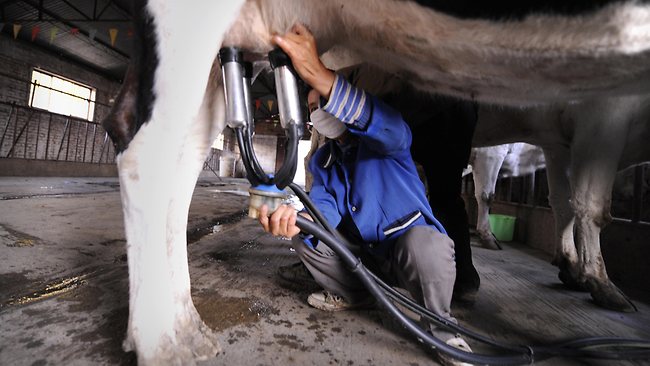
© Agence France-PresseA scientist is seen with a HiSeq machine that is used to read DNA in a genetics lab. Scientists have uncovered a trio of genes tied to migraine headaches, including one in which the link is exclusive to women, according to a study.
Scientists have uncovered a trio of genes tied to migraine headaches, including one in which the link is exclusive to women, according to a study published Sunday.
Migraines are acutely debilitating headaches -- sometimes with an "aura", in which patients have the impression of seeing through frosted glass -- that strike up to 20 percent of the population.
Scientists describe the condition, which is three to four times more common in women, as a brain disorder in which neurons, or brain cells, respond abnormally to stimuli.
The precise cause it unknown, but inheritance is thought to play a significant role.
To assess the genetic component, Markus Schuerks of Brigham and Women's Hospital in Boston coordinated an international sweep of genomes in 23,230 women, 5,122 of whom suffered from migraines.



Comment: Read the following article to understand why scientists believe farming could be the reason people have got shorter and why our brains have shrunk: The Devastating Effects of Agriculture: We're Getting Shorter NOT Taller and Our Brains are Shrinking, So is Farming to Blame?